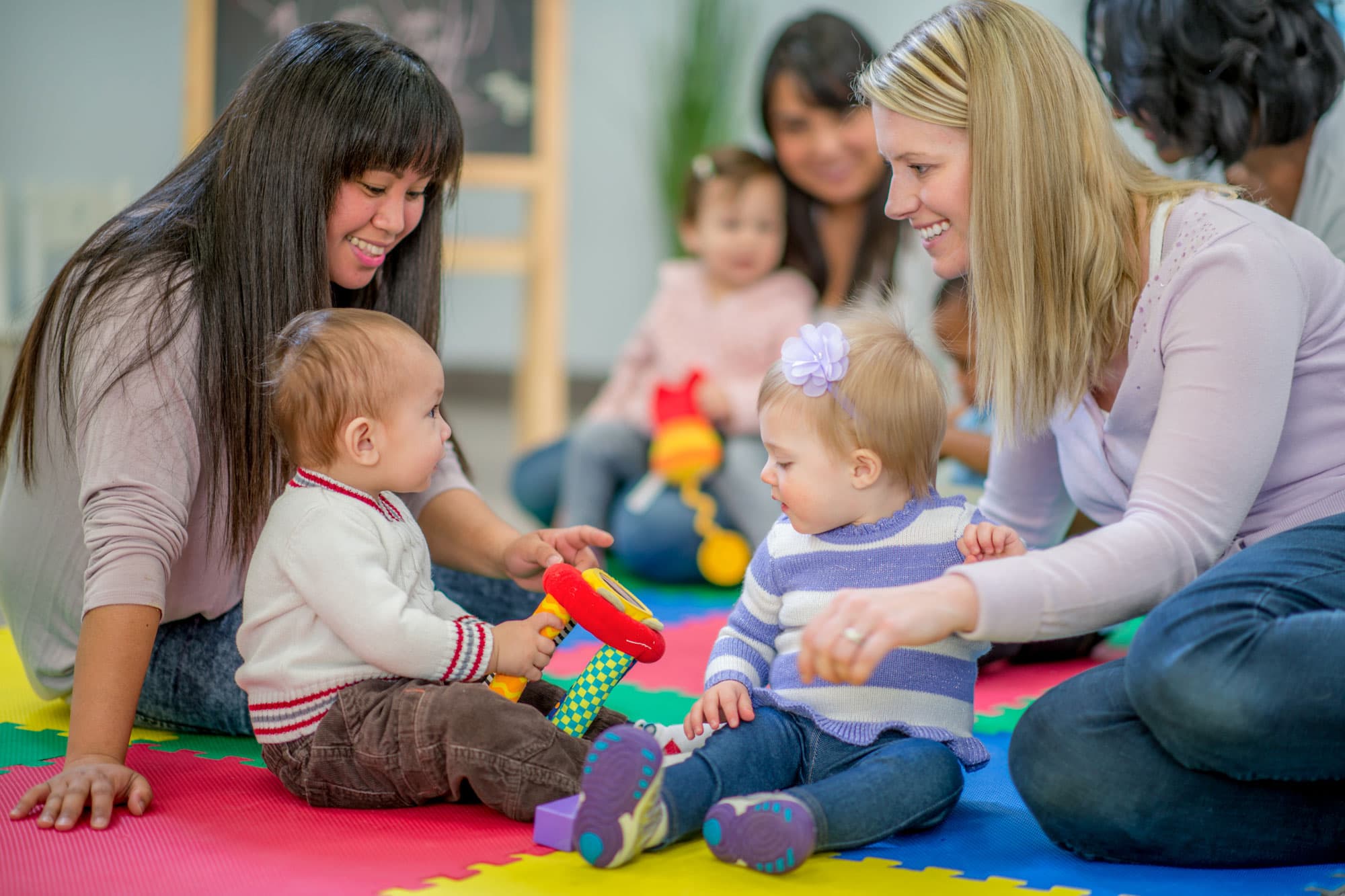
Understanding Receptive and Expressive Communication Milestones
Communication development in children is a fascinating journey, marked by significant milestones. As educators at Westcliff Early Learning Academy in Irvine, Calif., it’s crucial to be aware of these milestones to support and nurture a child’s language skills effectively. One essential aspect of communication development is the distinction between receptive and expressive communication. Let’s dive into each age-specific checklist to understand the key indicators and benefits for children aged 3-36 months.
 3-6 Months: Building Foundations
3-6 Months: Building Foundations
Receptive:
- Shows interest in others: mom, dad, siblings
- Maintains eye contact
- Looks in the direction of sound
Expressive:
- Responds to being spoken to
- Coos or babbles during play
- Attempts to imitate sounds or expressions
- Laughs
Benefits:
In this foundational stage, infants are introduced to the joy of interaction. Initiating with looks in the direction of sound and maintaining eye contact, babies are laying the groundwork for future communication. Expressive elements like cooing and attempting to imitate sounds or facial expressions showcase early signs of engagement.
 6-9 Months: Exploring Interaction
6-9 Months: Exploring Interaction
Receptive:
- Begins to recognize name
- Looks at familiar objects and people when named
- Plays with objects/toys
- Understands some gestures
Expressive:
- Protests by using voice and action. Example: arches back and whines when getting put in the car seat
- Practices varied sounds in loudness, pitch, and rhythm
- Has more complex sounds when babbling. Adds T or D or M sounds
- Imitates babbling when modeled
- Shouts or uses loud voice
Benefits:
As infants start to understand gestures and respond to familiar names, they are building crucial social communication skills. Varied sounds in loudness, pitch, and rhythm contribute to the development of vocal expression, adding depth to their communicative abilities.
 9-12 Months: Emerging Independence
9-12 Months: Emerging Independence
Receptive:
- Responds to a request with a gesture (example: waving goodbye when someone says bye)
- Plays peekaboo
- Respond to requests during routines (example: Let’s find your shoes! Then looks for shoes)
- Delivers objects when requested (example: brings the ball over when asked)
- Understands 25 words
- Understands simple directions with gestures
Expressive:
- Says mama and dada with intent
- Repeat sounds and/or words heard
- Gestures to communicate something (example: pointing)
- Consistently waves bye
- Initiates favorite games with adults like dancing or peekaboo
Benefits:
The emergence of understanding simple directions, more vocabulary and initiating favorite games with adults signifies a move towards independence. Consistent waving bye or pointing at things demonstrates not only motor skills but also early social interactions.
 12-18 Months: Expanding Vocabulary
12-18 Months: Expanding Vocabulary
Receptive:
- Knows body parts and points to them when asked
- Follows one step directions (example: get your water bottle)
- Understands 50 or more words
- Points to familiar people and objects in pictures when asked
- Plays with toys with their intended use (not throwing it or mouthing it)
- Symbolic play begins to emerge (pretend play- pretend to cook food)
- Beginning to know prepositions (example: off, on)
Expressive:
- Can make animals sounds (example: What does a cow say? “Mooo”)
- Names familiar objects on request
- Interested in hearing new words and trying to say them
- Gestures to communicate something (example: clapping hands)
- Can nod or shake head to indicate yes and no
- Has 10-50 words in their vocabulary
Benefits:
A growing vocabulary enhances a child’s ability to express needs and understand their environment. The introduction of symbolic play, imitating daily activities, marks a significant cognitive milestone.
 18-24 Months: Building Connections
18-24 Months: Building Connections
Receptive:
- Uses two toys together in symbolic play
- Understands simple directions (Example: It’s time to go!)
- Can follow two-step directions (example: Pick up the block then put it in the basket)
- Knows basic verbs (example: jump, eat)
- Understands 300+ words
Expressive:
- Knows their own name and can say it
- Uses many different consonant sounds
- Knows and uses 50-300 words
- Is verbally understandable to others at a minimum of 50% of the time
- Uses two- and three-word phrases (example: “more milk”)
Benefits:
Increased language comprehension and expression signify a deeper understanding of the world. The use of two-word phrases marks a significant leap in communication complexity.
 24-30 Months: Developing Precision
24-30 Months: Developing Precision
Receptive:
- Understands more location words and opposites (example: in, out)
- Understands concepts of sizes (example: big and small)
- Continues to do more complicated symbolic play schemes (example: pretend a block is a phone and talks into it)
Expressive:
- Can deliver -word phrases (example: I want snack)
- Can name some colors
- Says “I” or “my” instead of their name
Benefits:
The child’s ability to understand complex concepts such as size and more location words reflects advanced cognitive and linguistic development. Using three-word phrases frequently indicates precision in communication.
 30-36 Months: Mastering Communication Skills
30-36 Months: Mastering Communication Skills
Receptive:
- Accurately responds to yes and no questions
- Recognizes and identifies different parts of objects
- Demonstrates comprehension of questions (who? what? where?)
- Engages in pretend play scenarios that extend beyond everyday occurrences
- Grasps the concept of “all.”
- Capable of identifying objects based on their functions (example: find something you can drink from. The child gets a cup)
Expressive:
- Engages in coherent conversations with the appropriate word order
- Refers to others using pronouns like she, him, and her
- Incorporates prepositions such as in and out into language
- Utilizes a vocabulary ranging from 250 to 1000 words
- Applies negation effectively in communication
- Utilizes -ing endings in verbal expression
- Asks and responds to questions
- Achieves a 75% understanding rate by others
- Discusses objects and events not currently in immediate presence
Benefits:
Mastering communication skills, including effective conversation and discussing objects and events, sets the stage for successful interactions in various settings. The child is now equipped with a versatile communication toolkit.
Comprehending the nuances of receptive and expressive communication milestones is paramount for providing specific support at each developmental stage. At Westcliff Early Learning Academy, we celebrate these milestones, engage in meaningful interactions, and foster a communication-rich environment to ensure your child’s holistic growth.

